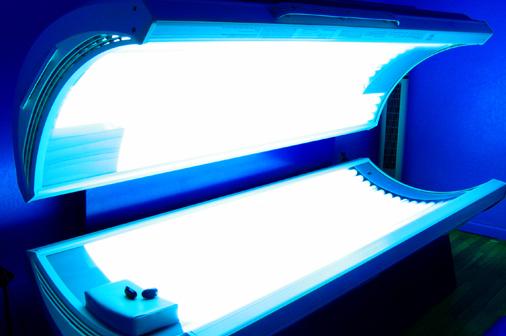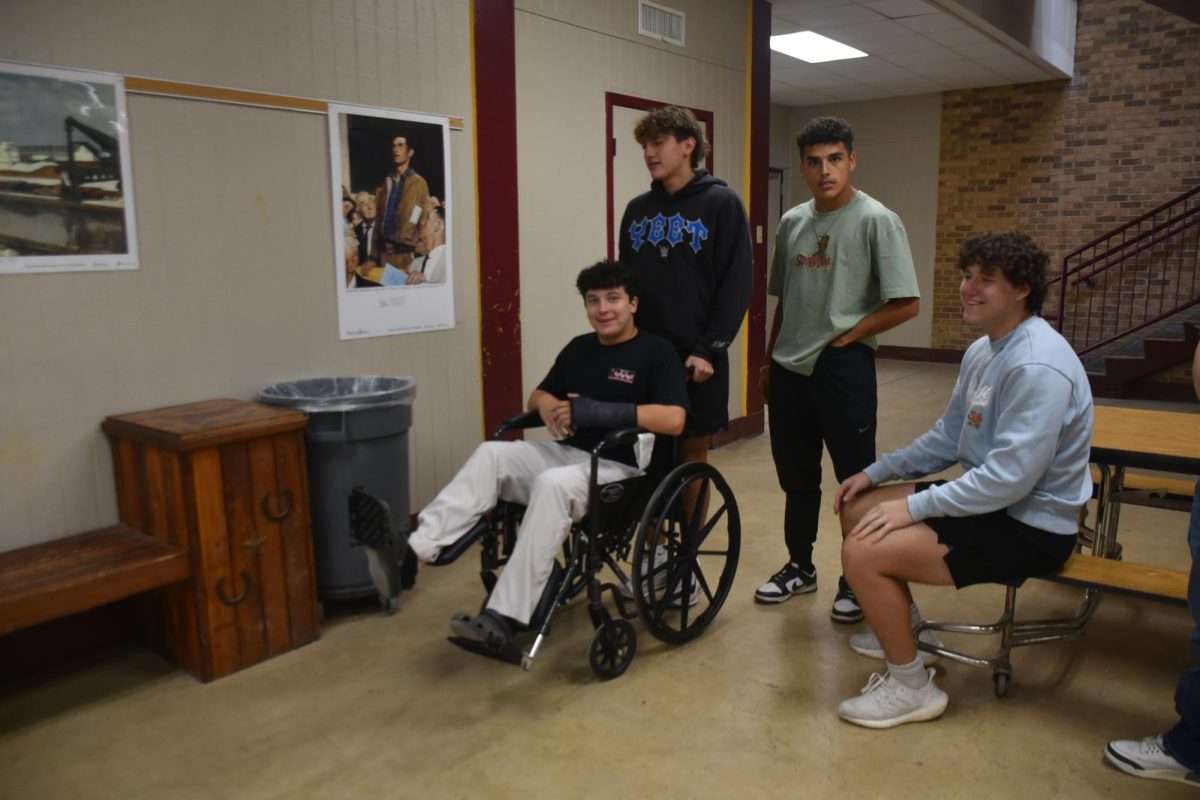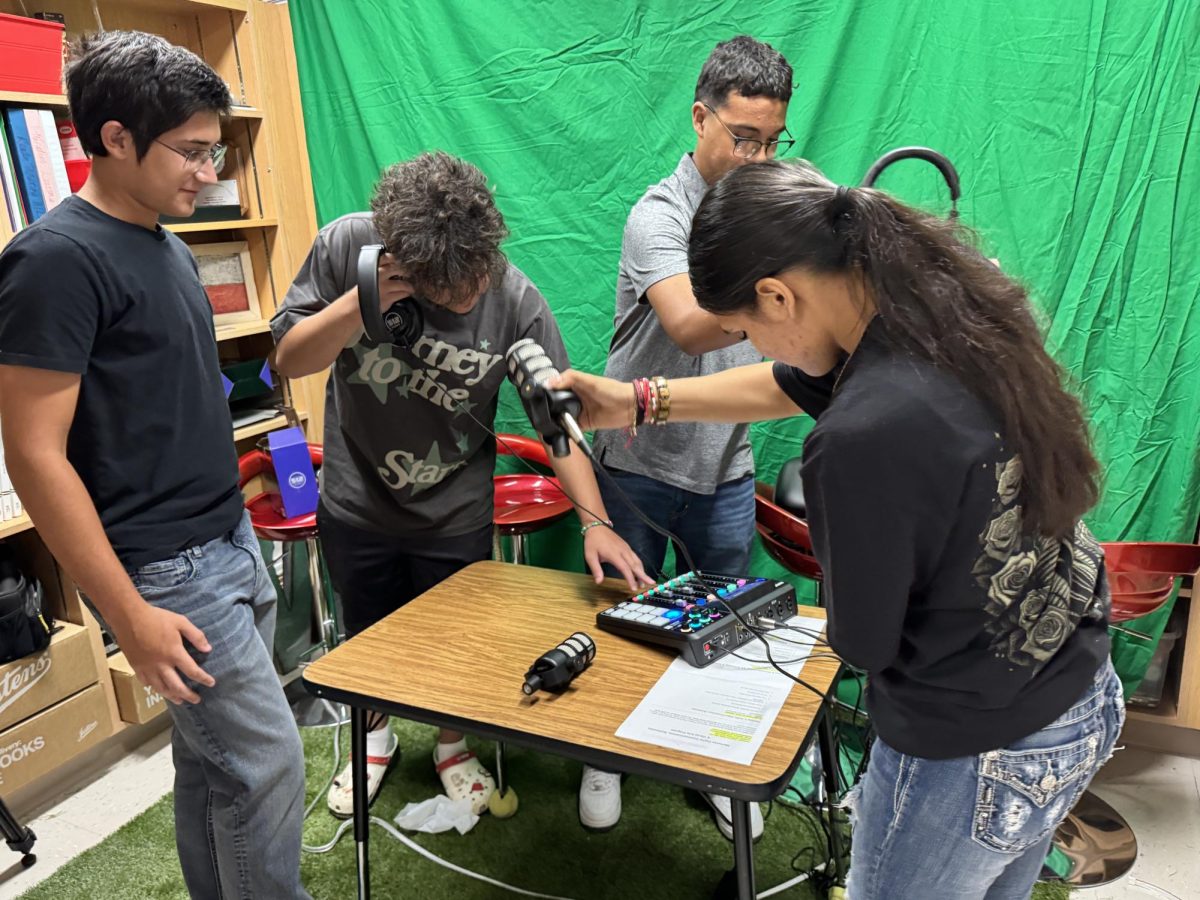When someone goes in to tan at a salon, there are a few different aspects that are considered before tanning. There are types of skin tones, times allowed inside and the ability to tan.
“We give you a survey to fill out that asks how you tan and your skin tone,” Ms. Howard said. “We also have you sign a waver saying you’re going to use protective eye wear when doing all tanning except spray tanning.”
Spray tanning is different than ultra-violet tanning because when a person spray tans they’re not being exposed to the UV rays. Spray tanning exposes the skin to a food-based product darkening the skin.
Inside tanning has several health risks just like tanning outside does. Protective eye wear must be worn at all times along with tanning lotion/moisturizer. Risks of burning or permanent damage to the eyes are possible if precautions are not taken outside and in the tanning bed.
“I spray tan, usually for prom,” sophomore Jodee Wofford said. “It doesn’t seem to affect my health in a negative way although I would prefer to tan in a tanning bed I usually don’t have the time.”
“Tanning is always a risk,” Ms. Howard said. “It doesn’t matter if you’re in a tanning salon or outside.”
Five Things You Didn’t Know About Tanning, but Should:
1) Sunscreen is the world’s best anti-aging product.
Sunscreen is your best friend when it comes to fighting wrinkles. Sunscreen not only blocks out the sun’s damaging rays – it also blocks their aging effects.
2) Sun damage happens now, but appears later.
People may think that just because you haven’t developed wrinkles or skin cancer yet, they’re fine. That couldn’t be more false. The more someone tans and damage skin at a young age, the worse you’re going to look when you’re older.
Picture yourself at 40 and 50. Would you like to have skin like Demi Moore’s, or would you rather resemble Demi Moore’s distressed leather purse? If your answer was the first option, tanning is not for you. While you might look tan now, your skin will suffer in the long run.
3) There is no such thing as a “safe” tan.
Yes, it’s true. Despite what tanning salons may claim, their beds can’t be safe, because tanning itself isn’t safe. Tanning is actually your skin’s reaction to damage already done, and a defensive attempt to protect itself from further harm. All those tanning beds that claim to be safe are lying.
Remember: the only safe tan comes from a bottle.
4) Dark skin is at risk too.
While it’s true that darker skin does have more natural protection from the sun than light, sun damage is still an issue. Darker skinned ladies still need to wear sunblock: at least an SPF 15 whenever you go out in the sun. This will help fight wrinkles, prevent cancer, and keep your skin looking beautiful.
5) SPF 15 is the minimum protection you need.
Don’t slather on an SPF 6 and think that you’re covered on a sunny day at the beach. While SPF 6 may be better than nothing, it’s the same thing as wearing nothing after a few hours in the sun. You’re also still inviting skin damage, wrinkles, and possibly cancer by not wearing enough SPF protection.
The absolute minimum amount of SPF that you should be wearing is SPF 15. Anything lower, and you’re risking serious sun damage and all the other horrible effects that come along with it.
Many students are afraid to tan or don’t fully understand the risk a person takes when tanning. The real question is, is tanning in a salon more dangerous than tanning outside?
“In actuality tanning is no more dangerous in a salon than outside,” Tan N’ Tone manager Kelly Howard said, “In fact when you tan in a salon it’s climate controlled and timed.”







